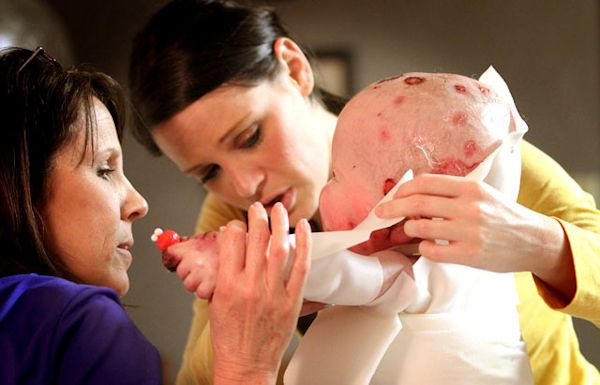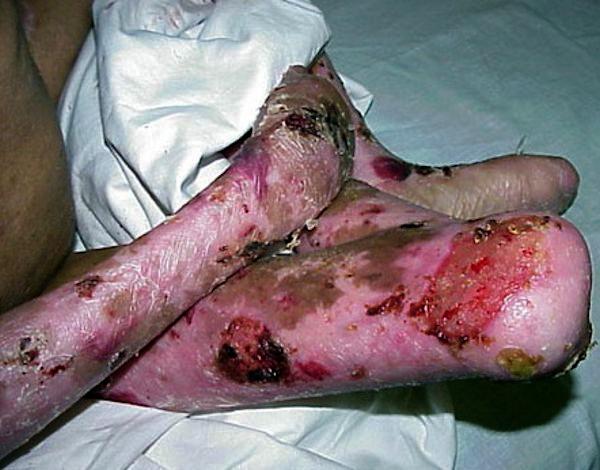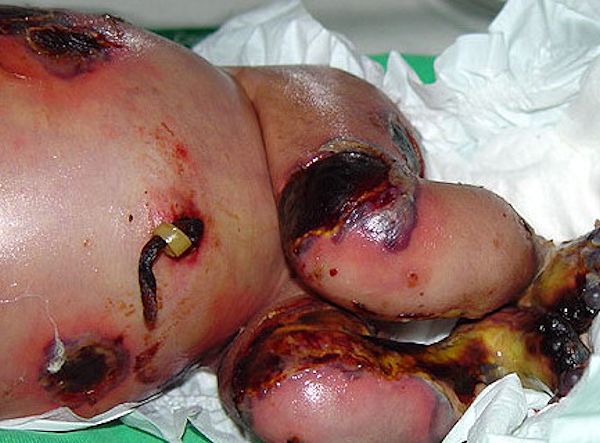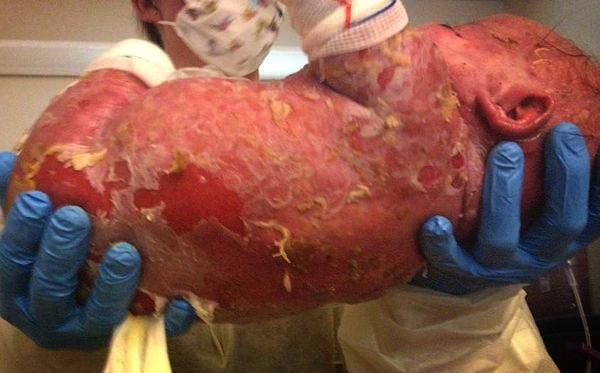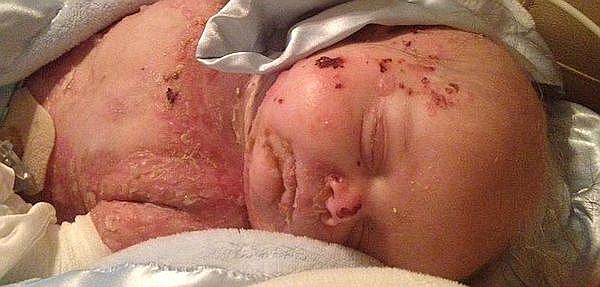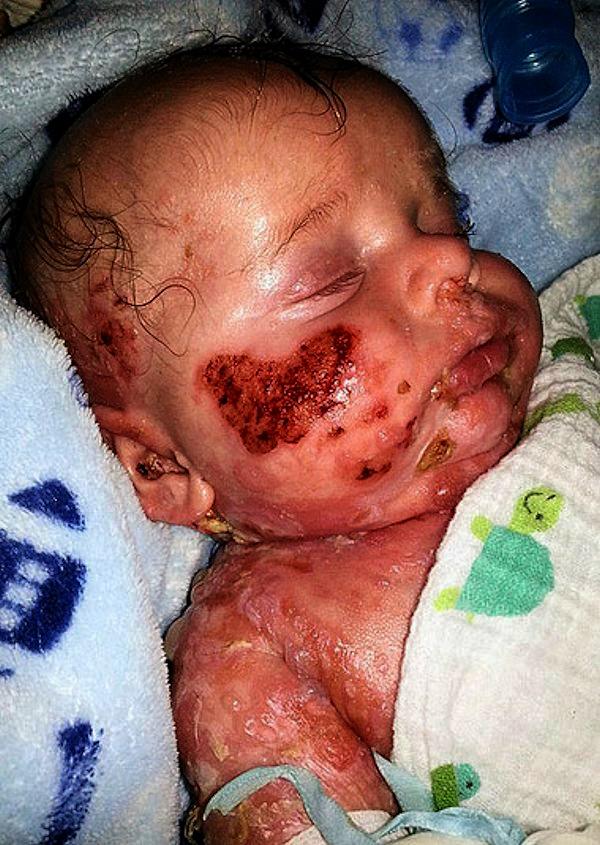"Pico Skin Relief" - Not Sold In The USA
5731 Lexington Drive, Parrish, FL 34219 USA http://www.pico-medicine.com
Phone: 336 306-0193 Email: donwilshe@biobased.us
Return to Home Page
"Pico Skin Relief" Tackles Genetic Blistering Disease
Epidermolysis Bullosa: Worst Disease You Never Heard Of!
The Dermatologist Doctor says I only have two left quarts left.
The feedback has been good. I gave "Pico Skin Relief" to a little girl with a "Genetic
Blistering Disease".
Her mother told me this week that areas on her leg and neck which haven't been
out of bandages for two years were clear for several days. Her only complaint
was the smell.
Her daughter would be more compliant if the smell was more appealing. In any
event any improvement in her life is a blessing. We will try and some essential'
oils the product to make it more pleasant. We hope to work in the future with
more Genetic Blistering Results, but only expect to be called in as a last
resorts. When insurance companies wont pay even though we provide the product
on case studies free. There are some slim pickens for candidates!
==================================================================
The History of Genetic Blistering Disease or Epidermolysis Bullosa!
What is epidermolysis bullosa simplex?
Epidermolysis bullosa simplex is one of a group of genetic conditions called epidermolysis
bullosa that cause the skin to be very fragile and to blister easily. Blisters and areas
of skin loss (erosions) occur in response to minor injury or friction, such as rubbing or
scratching. Epidermolysis bullosa simplex is one of the major forms of epidermolysis bullosa.
The signs and symptoms of this condition vary widely among affected individuals. Blistering
primarily affects the hands and feet in mild cases, and the blisters usually heal without
leaving scars. Severe cases of this condition involve widespread blistering that can lead
to infections, dehydration, and other medical problems. Severe cases may be life-threatening
in infancy.
Researchers have identified four major types of epidermolysis bullosa simplex. Although the
types differ in severity, their features overlap significantly, and they are caused by
mutations in the same genes. Most researchers now consider the major forms of this condition
to be part of a single disorder with a range of signs and symptoms.
The mildest form of epidermolysis bullosa simplex, known as the localized type (formerly
called the Weber-Cockayne type), is characterized by skin blistering that begins anytime
between childhood and adulthood and is usually limited to the hands and feet. Later in life,
skin on the palms of the hands and soles of the feet may thicken and harden (hyperkeratosis).
The Dowling-Meara type is the most severe form of epidermolysis bullosa simplex. Extensive,
severe blistering can occur anywhere on the body, including the inside of the mouth, and
blisters may appear in clusters. Blistering is present from birth and tends to improve with
age. Affected individuals also experience abnormal nail growth and hyperkeratosis of the
palms and soles.
Another form of epidermolysis bullosa simplex, known as the other generalized type (formerly
called the Koebner type), is associated with widespread blisters that appear at birth or in
early infancy. The blistering tends to be less severe than in the Dowling-Meara type.
Epidermolysis bullosa simplex with mottled pigmentation is characterized by patches of darker
skin on the trunk, arms, and legs that fade in adulthood. This form of the disorder also involves
skin blistering from early infancy, hyperkeratosis of the palms and soles, and abnormal nail growth.
In addition to the four major types described above, researchers have identified another skin
condition related to epidermolysis bullosa simplex, which they call the Ogna type. It is caused
by mutations in a gene that is not associated with the other types of epidermolysis bullosa simplex.
It is unclear whether the Ogna type is a subtype of epidermolysis bullosa simplex or represents a
separate form of epidermolysis bullosa.
Several other variants of epidermolysis bullosa simplex have been proposed, but they appear to be
very rare.
How common is epidermolysis bullosa simplex?
The exact prevalence of epidermolysis bullosa simplex is unknown, but this condition is estimated
to affect 1 in 30,000 to 50,000 people. The localized type is the most common form of the condition.
Some viewable examples of this horrible disease, far from the worst, I wish one doctor, hospital or
research institute would seek us for help or trails!
